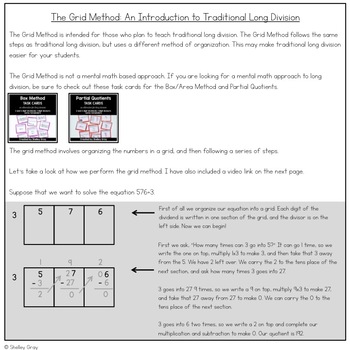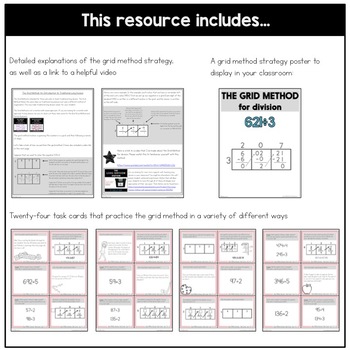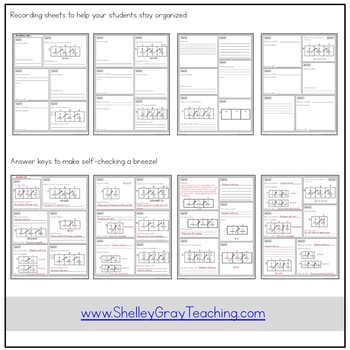Long Division Task Cards: The Grid Method
- PDF
What educators are saying
Also included in
- Are you working on multi-digit division in your classroom? This is one of the most challenging concepts that we face as teachers. Luckily, there are several very effective strategies for teaching this concept! This is a bundle of nine sets of long division task cards. Each set of task cards providesPrice $20.97Original Price $29.50Save $8.53
- This is a discounted bundle of long division resources.Please view the bundle contents to see exactly what is included.Price $36.99Original Price $47.49Save $10.50
Description
These task cards are also included in a Long Division Big Bundle. This includes nine sets of task cards for a variety of Long Division alternatives and strategies. See it HERE.
Are you looking for even more support with teaching long division in your classroom? You might be interested in this self-paced, student-centered Long Division Station that will allow your students to move through all of these strategies and approaches at their own pace. That station can be found HERE.
***********************************************************************
Are you working on multi-digit division in your classroom? This is one of the most challenging concepts that we face as teachers. Luckily, there are several very effective strategies for teaching this concept!
The Grid Method is intended for those who plan to teach traditional long division. The Grid Method follows the same steps as traditional long division, but uses a different method of organization. This makes traditional long division easier for some students.
The Grid Method is not a mental math based approach. If you are looking for a mental math approach to long division, be sure to check out my task cards for the Box/Area Method and Partial Quotients.
This resource is a fantastic supplement to those teachers currently using the Long Division Station in their classroom. It can be used as extra practice for the Box Method level when students get to that point in the station.
This resource includes:
- detailed explanations and examples of the grid method for division
- a link to a video explaining the grid method
- a grid method strategy poster to hang in the classroom for easy reference
- 24 task cards that will have students practicing the grid method in a variety of different ways to enhance understanding
- recording sheets to keep students organized
- answer keys to make self-checking a breeze
You may also be interested in:







